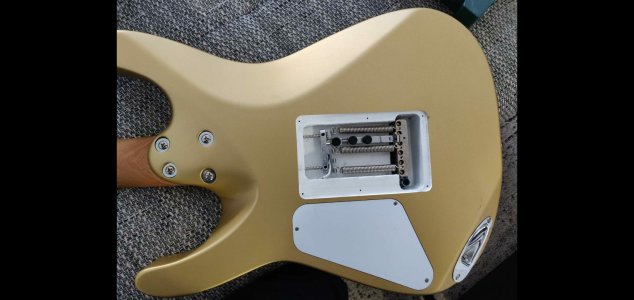alexreinhold
Senior Member
- Messages
- 653
Hi all,
Just wanted to get some expert opinions on locking tremolos. Since I like the flexibility of changing tunings, I have traditionally decked most of my Strat tremolos - but I never asked myself if there might be a better solution. Having just finished my first build (on which I use a Hipshot Tremolo), I wanted to ask what the pros and cons of blocking, decking and devices like Tremol-No are - should I decide to "hardtail" the tremolo.
Thanks so much,
Alex
Just wanted to get some expert opinions on locking tremolos. Since I like the flexibility of changing tunings, I have traditionally decked most of my Strat tremolos - but I never asked myself if there might be a better solution. Having just finished my first build (on which I use a Hipshot Tremolo), I wanted to ask what the pros and cons of blocking, decking and devices like Tremol-No are - should I decide to "hardtail" the tremolo.
Thanks so much,
Alex



